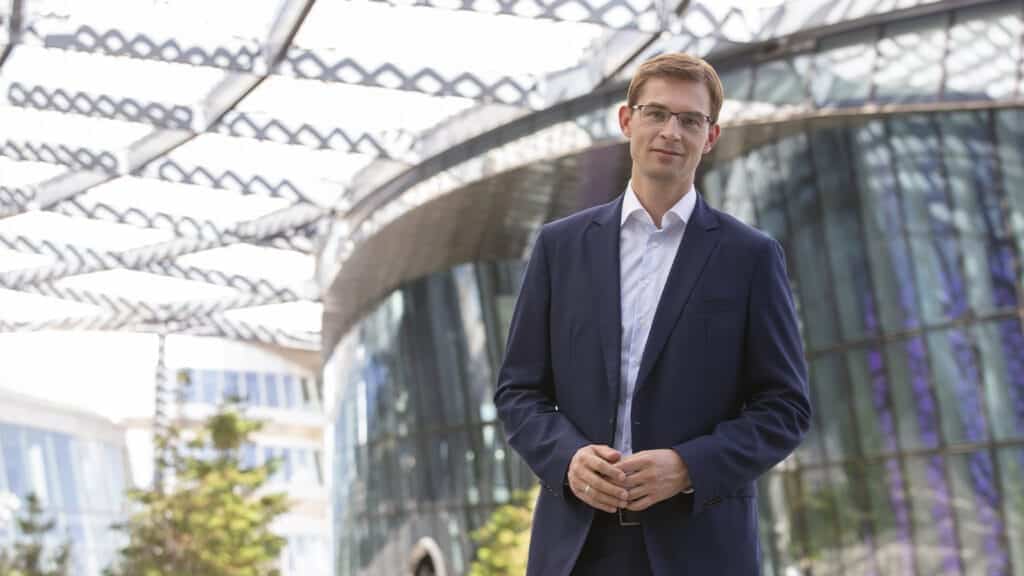Our bonds: Why does FRHC use bonds to finance development of 5G network?

Earlier this year, I talked about the telecommunication business line within the bigger business of Freedom Holding Corp. (FRHC). Now, it’s time to take a closer look at this incredibly important project for the entire group and see what resources will be allocated for delivering the project and why we have chosen a certain format for its financing.
The current trend in the global market that we have noticed is that the borderline between telecommunication operators and banks is fading. This synergy is similar to what has happened between banks and brokerage companies. Every successful digital bank is transforming into an investment platform, while every successful telecommunication company is transforming into a banking infrastructure.
There are great opportunities for such synergy among these business lines in Kazakhstan. The population in our country is steadily growing, the people’s income is relatively high compared to other countries of our region and we have a diversified economy and open financial system. This is the sole country in Central Asia that possesses an investment credit rating. Finally, Freedom Holding has built a sophisticated ecosystem with around six million clients in Kazakhstan. Our customers buy airline tickets and food, use banking and insurance products and purchase more than 100,000 smartphones every year in our retail chain. On top of that, Kazakhstanis buy 300,000 smartphones a year with the help of our loans.
Despite really impressive growth, the telecommunication industry for a long time was the most underfunded in Kazakhstan. Because of a series of mergers and acquisitions and reforms some telecom operators have missed vital investment cycles. As a result, mobile networks in our country haven’t yet realized their potential given that our population is very optimistic toward technologies (mobile payments account for 85% of transactions in retail) and young. That is why many companies across the country are allocating huge amounts of money for digitalization. We are doing so as well.
We know that Kazakhstanis sometimes need internet more than electricity and even water. If we succeed in providing our country with high-quality and affordable internet access, it will be one of the biggest contributions to the socio-economic development of Kazakhstan. If the project succeeds, it will effectively mitigate digital inequality.
We need creative solutions to make a difference in communication quality. We have already learned how to lay fiber optic lines within cities in a faster and cheaper way. We spend $1,000 to $1,500 per kilometer of a line. Sometimes it is possible to do the same for $700, while our predecessors used to spend about $10,000 per kilometer of lines. Moreover, our lines can already generate cash flow and satisfy the needs of law enforcement agencies in security systems.
Fiber optic lines connect operators and base stations. We do not doubt that we will be able to build any other infrastructure cheaper and faster since we rely on advanced technologies. I think that our telecom network will pay off faster than similar networks by our competitors. FRHC is also going to invest in data processing centers (DPC) which is a financially sustainable business due to the exponential growth of data we are gathering.
Let’s not forget about synergy. For instance, a telecom operator spends $15 to $20 to attract new customers, while for banks the same rate is $100 to $150. At the same time, an operator earns about $150 per client’s lifetime cycle. This means that one day, our telecommunication services may become free for customers. However, that would require serious changes in our marketing strategy in favor of telecom.
What should we do to deliver all those plans? First of all, we need support from our clients. Everything we have already built so far, we built at the expense of our customers, not rich investors or sponsors. Our clients always were and still are our key strength.
Currently, we need $200 million to finance the first stage of the project: constructing a backbone fiber optic line network throughout Kazakhstan (80,000 kilometers of lines), a DPC, 5G networks in Astana, Almaty and Shymkent and purchasing licenses for radio frequencies. This is not much for a company with $7 billion on its balance sheet and almost $1 billion in capital. We could also take money from the undistributed net profit of the group, which is about $800 million. However, it would put all other business lines of the holding like banking, insurance and brokerage in a disadvantageous position. In the end, this could lead to our business decline that, of course, would affect the FHRC stock value and hit all our shareholders, many of whom are our clients and partners. The trick is to act fast and make it attractive for all interested parties.
That is why we are offering our shareholders, partners and customers the funding tool most effective in this situation: a bond-secured loan issued by Freedom Finance SPS, a 100% subsidiary of FRHC. Since the deal is guaranteed by the holding, these investments are going to be reliable and beneficial for clients. Valued at $100 per bond and minimal purchase of ten bonds, they are going to be affordable for the vast majority of our customers. Even though the offering memorandum is still under review by the Astana International Exchange (AIX), with the placement scheduled for the middle of December, we are already confident that we’ll see oversubscriptions on our bonds. The holding is strong enough to meet its obligations to clients if anything goes wrong. That being said, all our previous experience suggests that everything is going to be okay and this project will let us and our clients earn good money.
We expect that our securities will be highly liquid. Since the placement will occur on the AIX, investors will be able to sell the bond anytime during a trading session. The coupon rate is fixed at 12% for the first two years with coupon payment each month. I think this also will contribute to the interest in the securities. After the second year, the coupon rate will be calculated according to a formula Effective US Federal Funds Rate + 6.5%. We believe that this is going to be a fair return for our investors.
In the middle of next year, we plan to launch the first pilot 5G projects, to deploy a backbone network and open a DPC. Given all those investments in our telecommunication network, we expect to be the fourth-biggest telecommunication operator in Kazakhstan with a market share of 25% to 30%.
In terms of the ultimate result, we expect that Kazakhstan will reach leading positions in the global mobile and fixed internet ranking. We have already outperformed many developed countries in terms of digital banking, thanks to Freedom products, for example. Kazakhstan is already ranked among global leaders in terms of public digital services and we know that we can do the same in the field of telecommunication.

